If you’ve ever stared at a blank screen, watching the cursor blink while the words refuse to come, you’re not alone. Whether you’re drafting your first grant or your fiftieth, writer’s block is a shared struggle—especially when deadlines are looming and the stakes feel high.
The good news? You don’t have to wait for the perfect sentence to appear. These five creative strategies can help you break the block and get your writing moving again.
1️⃣ Get Messy First—Then Clean It Up Later
Perfectionism is a writer’s worst enemy. If you’re stuck trying to “get it right,” try getting it wrong on purpose.
Here’s your move:
- Start with a brain dump. Set a timer for 10 minutes and write everything you know about the section—fast, unfiltered, and messy.
- Then, write the “bad” version. Make it awkward, too long, overly casual—whatever comes out.
Why does this work? Because it lowers the pressure. Once the words are out of your head and onto the page, even if they’re rough, you’re no longer starting from nothing. From there, you can edit, shape, and clarify.
💡 Remember: you can’t revise a blank page—but you can revise a bad one into something great.
2️⃣ Talk It Out
When the writing won’t come, try saying it out loud instead. Talk through what you’re trying to say, as if you were explaining it to a coworker, a friend, or even your dog.
You can:
- Record yourself and transcribe key phrases
- Use a voice-to-text app
- Jot down what you’re saying as you speak
Speaking forces you to simplify and clarify. You might find that your spoken explanation contains exactly the language or structure you’ve been searching for.
3️⃣ Start with the Last Sentence First
If the introduction is tripping you up, skip it. Ask yourself:
👉 “What’s the main point I’m trying to make in this section?”
Write that as your last sentence. Then work backward.
This strategy is especially helpful in sections like the program description or statement of need, where you’re making a case. Starting with the conclusion gives you direction—and often reveals what pieces you still need to support your argument.
4️⃣ Switch to Pen and Paper
If you’ve been stuck at your keyboard, try going old school. There’s something powerful about the tactile act of writing by hand. It slows you down just enough to let your ideas catch up.
Here are a few ways to use pen and paper when you’re stuck:
- Mind map your proposal section, drawing connections between ideas.
- Sketch a visual of your program—maybe a timeline, a logic model, or a community impact map.
- Write longhand if the words aren’t coming on screen. Even a rough handwritten paragraph can help you find your voice again.
💡 Sometimes creativity needs a change in pace—and putting pen to paper gives your brain that shift.
5️⃣ Change Your Scenery
Writer’s block isn’t always about the words—it can be about your environment. If you’ve been in the same spot for too long, your brain might just need a reset.
Try moving to:
- A different room
- A coffee shop
- Outside (bonus: sunlight and fresh air help!)
Or switch up the vibe: turn on some instrumental music, light a candle, or even just stand instead of sit.
💡 A small shift in your surroundings can unlock new energy and help you think differently.
✨ Final Thoughts
Writer’s block doesn’t mean you’re doing anything wrong—it just means your brain needs a new approach. Try one of these strategies the next time you’re stuck, and give yourself permission to write badly, sketch your way through a problem, speak instead of type, or simply walk away for a moment.
🟢 And if you want more structure and support, the Grant Writing Made Easier course includes guides, templates, and prompts designed to help you get unstuck and stay focused.
💬 What helps you move through writer’s block? Share your favorite go-to move in the comments—we’d love to learn from you! 🚀







Leave a Comment